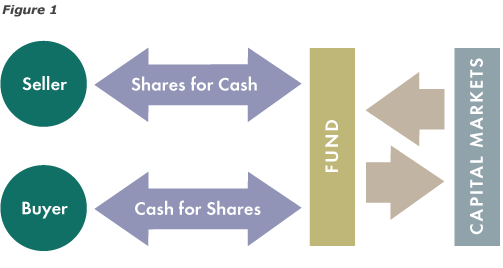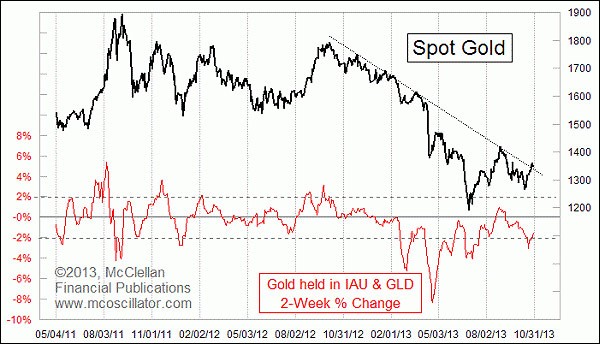How to Calculate the Value of an ETF
Post on: 2 Июнь, 2015 No Comment

ADVANCED TRADING
Exchange Traded Funds (ETFs): at a glance
An easy-to-trade investment that tracks index or market performance through a single share
Diversify your portfolio by tracking an index or market through a single share with ETFs. 
Tracking the performance of an index can be difficult and expensive – imagine the cost involved in buying every share in the FTSE 100 and the time and skill it would take to constantly monitor your holdings.
ETFs make market tracking easier. They do this by tracking the performance of an index like the FTSE 100 or S&P 500. By buying units or shares in an ETF, you can gain access to an index or market through a single share holding. 
ETFs combine the benefits of a fund – instant diversification and access to a whole market or sector – with the benefits of a share – flexibility, continuous pricing, ease of access and continuous dealing during market hours. 
Of course as with all investments, ETFs carry risk. Their value can fall as well as rise and you may get back less than you initially invested. If you’re unsure whether ETFs are right for you, please seek independent financial advice.
Why exchange traded funds?
- Simple — bought and sold just like shares. they are easy to trade
- Flexible — invest in global markets and assets that can be difficult to access
- Diversification — ETFs can be a useful addition to a balanced portfolio and allow you to access whole indices which are based in various countries e.g. the FTSE 100 (based in the UK) or DAX (based in Germany)
- Clear pricing — as ETFs are bought and sold like shares, standard commission rates apply – from 1 March 2014 only £5.95 to £11.95 when you buy or sell online. There is no Initial Service Charge (ISC) and low Total Expense Ratio (TER) normally applies. You’ll find further information on charges on the ETF factsheet
- No UK stamp duty — remember tax laws can change.

Who issues ETFs?
A number of companies offer London-listed ETFs, including iShares (BlackRock), ETF Securities, SPDR (State Street) and Vanguard.
Interested in ETFs but not ready to pick and manage them yourself? Barclays Wealth Global Markets Funds offers 5 portfolios of ETFs, designed to meet a range of risk preferences.
ETFs and risk
As well as the risks mentioned above, there are some other features of ETFs that you should consider carefully. 
Counterparty risk — most ETFs do not use leverage and achieve their objectives by purchasing a diversified pool of assets, e.g. the individual stocks that make up the FTSE 100. However some achieve their objectives through the use of derivatives ,  typically swaps ,  which carry counterparty risk. If the counterparty (i.e. the issuer of the derivatives) does not pay the sums due, the ETF investor will not be paid regardless of the performance of the underlying assets.
Leveraged ETFs and inverse ETFs — there are some more complex ETFs available on the market. These include ETFs that offer leverage, i.e. where gains or losses can be magnified, and ETFs that are designed to perform inversely to their underlying index or benchmark, i.e. they aim to go up in value when the market falls and vice versa. 
Leveraged ETFs and inverse ETFs also have unique compounding and daily reset features which can significantly increase risk. 
Compounding is the cumulative effect of applying gains or losses from one time period to the sum invested, plus the gains or losses and income from a previous time period. The effect of compounding can lead to gains or losses that occur much faster and to a greater degree than with conventional investments.
The daily reset features of ETFs can also have a significant impact on returns. Because exposure to a particular index resets at the end of every trading day, performance over a longer period can often deviate from what investors might be expecting, potentially producing inferior returns. 
Leveraged ETFs and inverse ETFs are highly complex financial instruments that carry significant risks. They are generally designed for day traders and not suitable for investors who plan to hold them for one trading day or more. They are only suitable for experienced short-term investors who fully understand and accept these risks. 
These types of ETF can exaggerate market movements and can be extremely volatile. There is a risk that you could lose all or some of your money. Before investing in any leveraged ETFs and inverse ETFs. you should read the individual prospectus carefully.
Taxation – the majority of ETFs are offshore funds and specific taxation rules apply for investors subject to UK taxation. Broadly if an offshore fund has “reporting status” then gains are subject to capital gains tax. If an offshore fund does not have “reporting status” then gains are subject to income tax. Please ensure you understand the expected tax treatment fully before making an investment decision. If you are unsure, please seek independent taxation advice.
Remember:
- The value of your investments can fall as well as rise and you may get back less than you initially invested. Investing is not for everyone. if you are unsure please seek independent advice.














